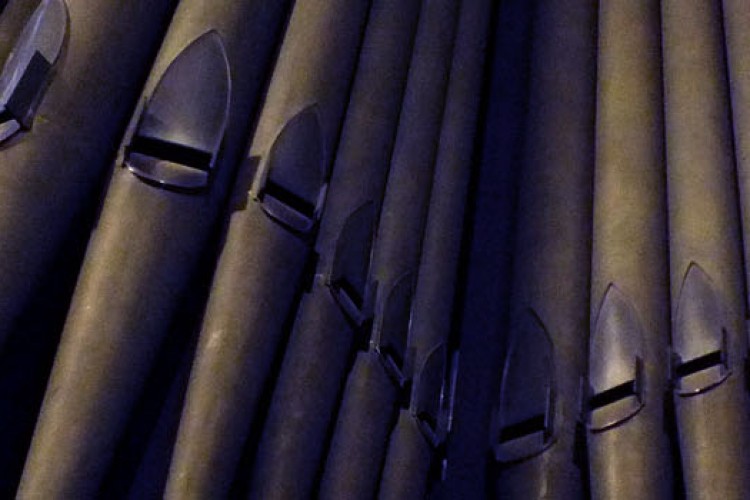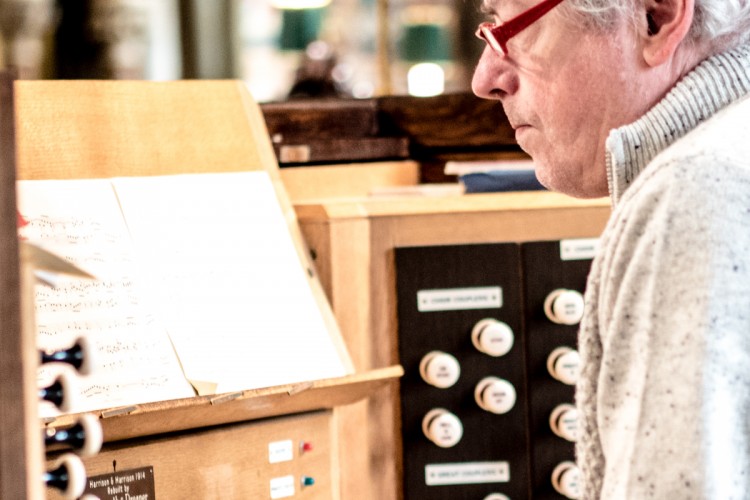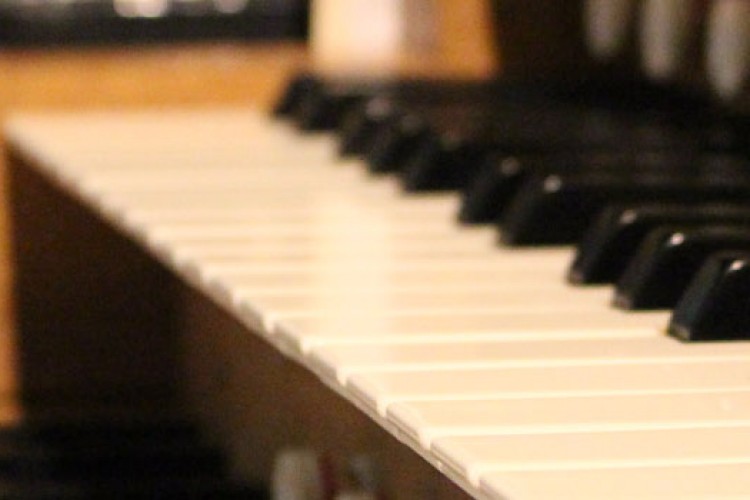The organ was built in 1914 by Harrison and Harrison of Durham. It replaced an instrument by ‘Father’ Henry Willis and is the largest non-extension organ in Bournemouth. It has 52 speaking stops over three manuals and is located in a large chamber in the north-east corner of the church.
History
In 1869 Alexander Morden Bennett, the founding vicar of Bournemouth, placed an order with Henry Willis for a new organ costing £700. Street’s new building of St. Peter’s was largely completed, lacking only west transepts and tower, and the previous temporary organ was ineffectual in the new building. The entirely new organ, of 24 stops over three manuals and pedals and with 1292 pipes, was dedicated on St. Luke’s Day in 1870. The organ occupied a chamber on the east side of the north transept, next to the sanctuary, and the front pipes were decorated with coloured diaper work in 1873 in keeping with its location. Willis cleaned the instrument in 1892, but by 1912 it was described as ‘nearly worn out and hardly worth repairing’.
In 1913, the church launched an appeal for a new and much larger organ, together with new purpose-built vestries on the north-east corner of the church. A contract was signed with Harrison and Harrison of Durham to build an instrument of 48 stops over three manuals and pedals, eventually costing over £2700. The organ was built in a large new chamber created in the space formerly occupied by the vestries on the east side of the north-east transept. The area next to it formerly occupied by the Willis organ was made into the Annunciation Chapel with a new window by Ninian Comper. Much of the Willis pipework was incorporated into the new specification. Arthur Harrison is said to have taken ‘infinite pains with it, and had special difficulties to contend with owing to the distance of the instrument from the main body of the church’. Casework for the new instrument was designed by Ninian Comper, but the estimated cost of £750 was never found and the instrument remains caseless. The carved wooden screen below the pipe feet on the west front is reputed to have come from the redundant Holy Trinity Church a short distance away (later demolished).
The organ was overhauled by the Liverpool firm of Rushworth and Dreaper in 1976, increasing the size to 52 speaking stops and adding a detached console on a moveable platform at the front of the nave. Regular maintenance and small modifications have taken place over the years, but today, nearly half a century later, the instrument is in need of a comprehensive rebuild.
The full specification is available here on the National Pipe Organ Register.
Today
The organ can be heard in a number of the Wednesday lunchtime recitals, in evening concerts, and in most services. Organists who would like to give a recital at St. Peter’s should contact the Recitals Co-ordinator.



